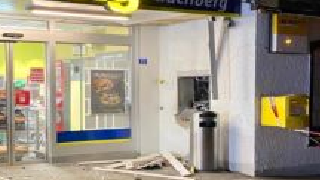Breadcrumbs
Florida: IID Emplaced on Vehicle

TRIPwire, 21 December 2022
On 13 December 2022, at approximately 0500 hours local time, firefighters responded to a residence in the Northside area of Jacksonville after an unidentified suspect emplaced an improvised incendiary device (IID), described as Molotov cocktail, on the hood of a vehicle parked in the home’s driveway before lighting it, prompting an explosion. No further device details have been released. The vehicle sustained moderate damage, but no injuries were reported. The investigation is ongoing.
Pennsylvania: Explosives Located in Residence, 1 Arrested

TRIPwire, 21 December 2022
On 20 December 2022, at approximately 1600 hours local time, local police and Bethlehem Fire Department Bomb Squad technicians responded to a Northampton Borough home after receiving a call from a resident after her husband crashed his vehicle into their home and was carrying explosives, described as two sticks of homemade dynamite. The suspect was arrested, and the investigation is ongoing.
West Virginia: Pipe Bomb Discovered on Employee’s Desk, 1 Arrested

TRIPwire, 21 December 2022
On 19 December 2022, Huntington Police Department officers arrested a 58-year-old suspect after co-workers found a suspected pipe bomb on his workstation at a steel company in Cabell County. According to authorities, the suspect made several threats to other employees after becoming disgruntled following a 16 December talk with his supervisor. No further device details have been released. The suspect was charged with making terroristic threats, and the investigation is ongoing.
Colombia: Explosive Device Thrown at Police Station, 4 Injured

TRIPwire, 21 December 2022
On 20 December 2022, two suspects on a motorcycle threw an explosive device at the Timbio Police Station in Timbio, Cauca, before fleeing. The explosion left four people injured and caused minor damage to the police station and some neighboring homes. No further device details have been released. No group has claimed responsibility for the attack, and the investigation is ongoing.
Indiana: Explosives Found Inside Barn That Caught Fire

TRIPwire, 20 December 2022
On 19 December 2022, at approximately 2030 hours local time, five local fire departments responded to a barn that caught fire on County Road 36 north of Wakarusa. According to authorities, explosives were inside the building. No injuries have been reported and no further details on the explosives have been released. The investigation is ongoing.
Pakistan: 2 IEDs Functioned Near Shops Injuring 20

TRIPwire, 20 December 2022
On 19 December 2022, local authorities and a bomb disposal squad responded to Umar Farooq Chowk in Khuzdar, after an IED concealed on a parked motorcycle was remotely functioned. As police and bystanders rushed to the scene of the initial explosion, a second IED concealed on a parked motorcycle was remotely functioned. Twenty people were injured, and several nearby shops sustained damage from the blasts. No further details on the IEDs were released. No group has claimed responsibility for the attack, and the investigation is ongoing.
Kentucky: IEDs and BMM Discovered on Road

TRIPwire, 19 December 2022
On 16 December 2022, at approximately 0830 hours local time, Bardstown Police Department officers responded to North 1st Street in Bardstown after receiving a call for a suspicious device on the road and discovered IEDs and bomb-making material (BMM). No further device details or details on the BMM have been released. The Kentucky State Police and Louisville Metro Police bomb squads responded and removed the IEDs and BMM. The ATF is assisting in the ongoing investigation.
Italy: Explosives Used in ATM Attack

TRIPwire, 19 December 2022
On 16 December 2022, at approximately 0200 hours local time, the Carabinieri responded after unknown suspects used explosives to attack a bank ATM in Cavaglia. No further details on the explosives have been released. No damage to the ATM was reported and no money was stolen. The investigation is ongoing.

